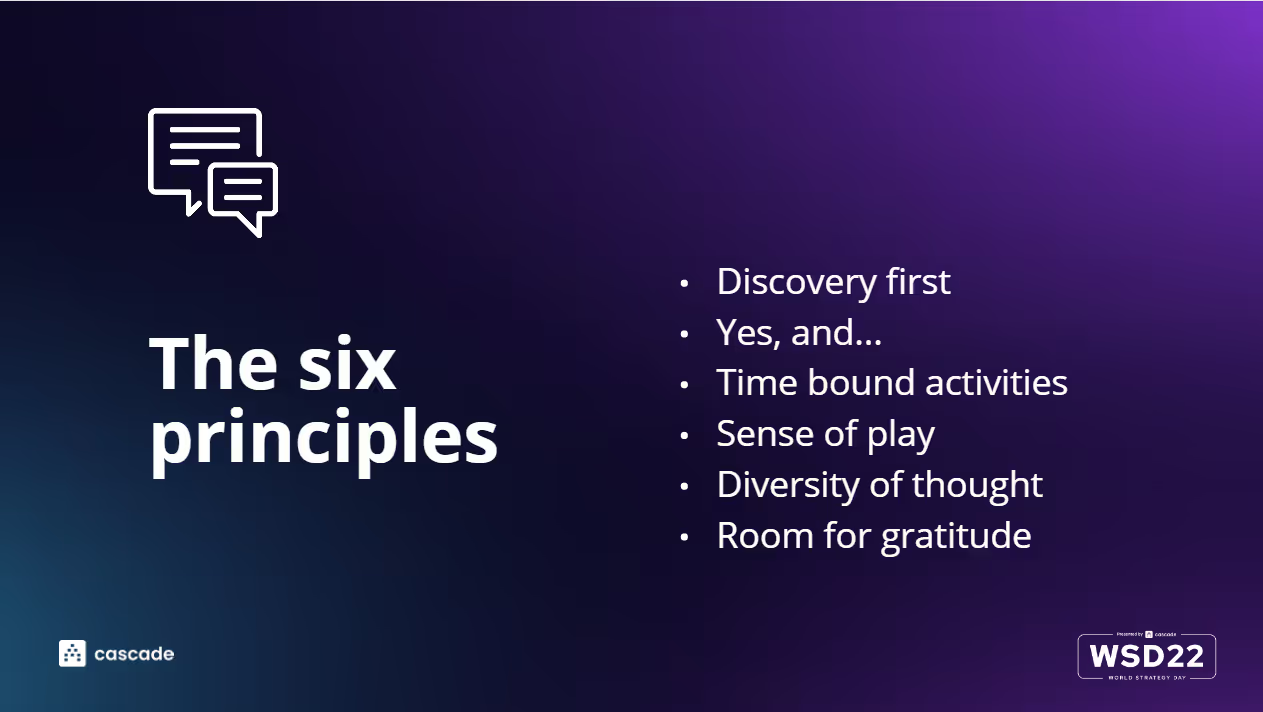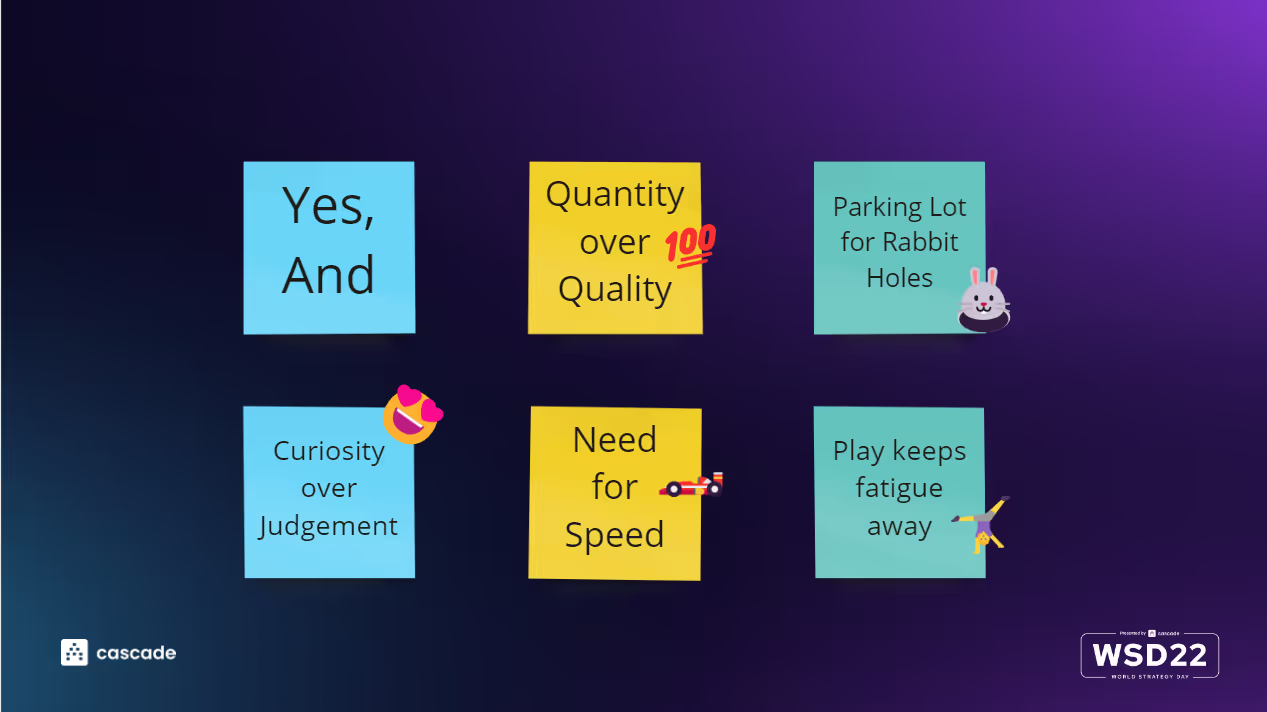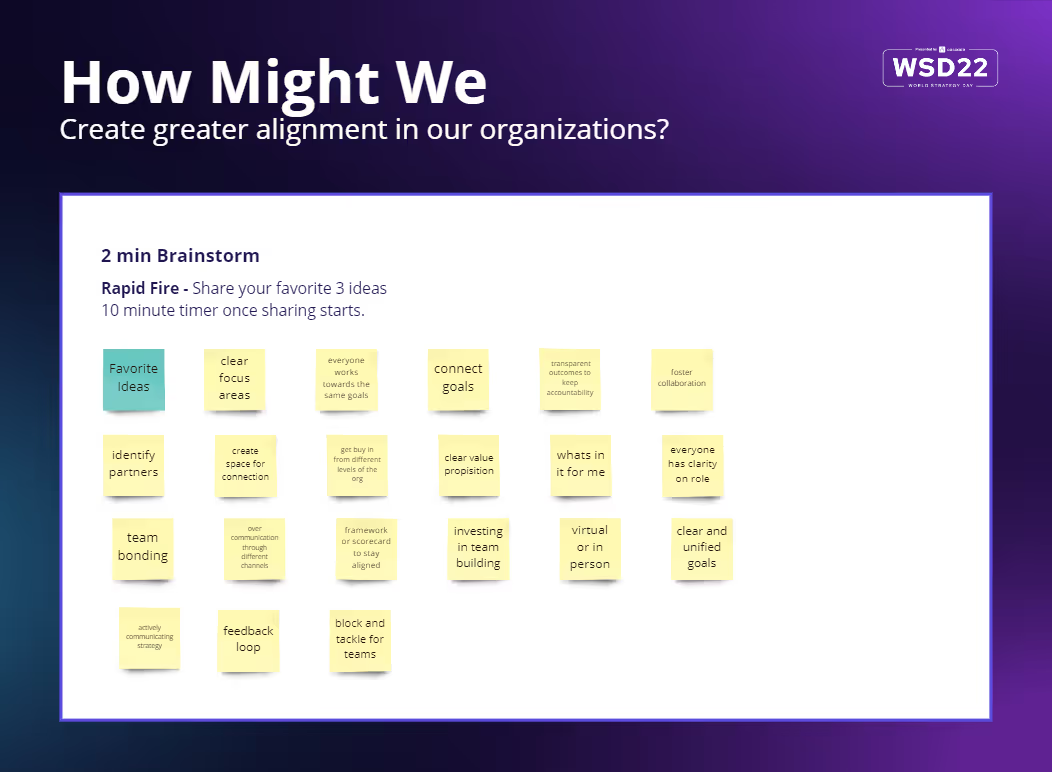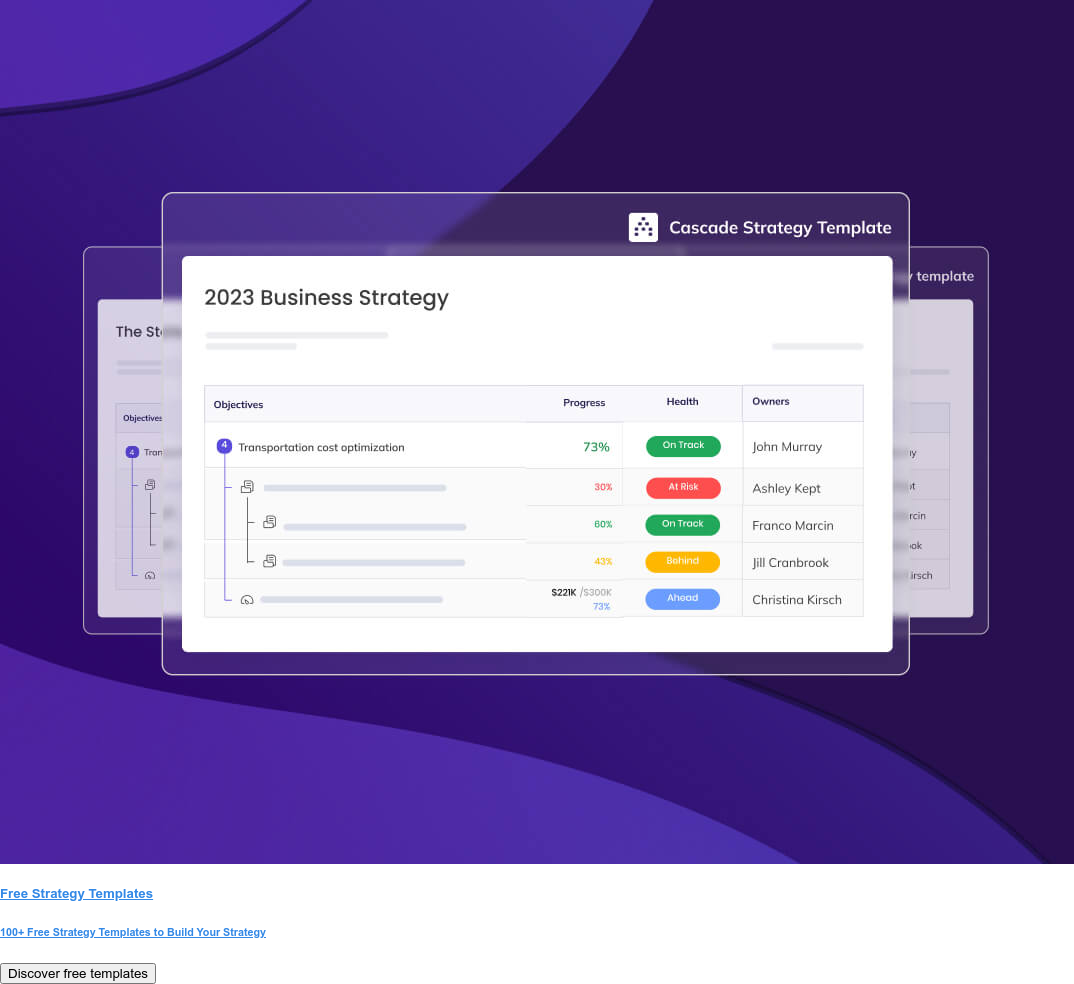Co-creating strategy at an organization can be a daunting task, but it doesn't have to be.
Ilana Rosen, Director of Innovation and Strategy at Old Navy, shared with us the keys to successfully co-create strategy at any organization in her session at World Strategy Day 2022. This article will recap the most important parts of the session, including the six principles of co-creation, as well as some tips and tricks for how to effectively conduct a co-creation strategy session.
But before we start… The first step in co-creating strategy is understanding what strategy is.
According to Clay Christensen, the father of modern-day strategy, strategy is made up of two components: (1) a clearly defined destination and (2) the directions to get there.
Okay? That's how we can define strategy.
But how can we think about strategy as a tool?
So strategy is not just a thing that sits on the shelf. It's also an opportunity to co-create this vision with your internal stakeholders and create a change management platform.
Let's discover how!
The 6 Principles Of Co-creation
The six principles of co-creation include:

Let’s zoom in on each of these!
Discovery first
The first principle is discovery. This is about using an innovation mindset and taking a listening tour of your internal talent. This is important because it makes people feel heard and included in the process, and they will be more likely to execute the strategy later on.
“Yes, and…”
The second principle is "yes, and…". In co-creation sessions, it's important to set psychological safety upfront in every meeting and interaction. This means avoiding the use of the word "no" and instead flipping the script by asking, "okay, what's the build on this?". This creates a safe space for ideas and suggestions to be shared.
Time-bound activities
The third principle is time-bound activities. This is about being super tactical in meetings and segmenting activities out. By using timers in sessions, you can ensure that you finish what you started and that everyone stays on track. It follows this idea of “done, not perfect” so you make sure that you finish what you started.
Sense of play
The fourth principle is a sense of play. This is an important aspect of co-creation as it helps to break down barriers and create a more relaxed and open environment. Instead of thinking of strategy as a war room, we should think of it as a playground.
Diversity of thought
The fifth principle is diversity of thought. This is about bringing different perspectives to the table and encouraging everyone to think outside of their usual ways of thinking. This can lead to more creative and innovative solutions.
Room for gratitude
The final principle is room for gratitude. This is about creating a positive and supportive environment and taking the time to acknowledge and appreciate the contributions of others. When running sessions, Ilana suggests ending the session with the following question: “what resonated with you most today?”. This is not only to let everyone feel really good and end on a high note, but it's also to give you valuable data about what people enjoyed and what language they're really hanging on to from the session.
🎥To zoom in on these 6 principles, watch Ilana’s Strategy Fest keynote here.
Translating Theory To Practice: The Workshop
Translating theory to practice is crucial when it comes to co-creating strategy at your organization. Follow this step-by-step process of how to lead a Co-creating Strategy Workshop.
Setting ground rules
The first step is setting ground rules. Before starting the workshop, it's important to have clarity on your objectives, goals, and responsibilities. Ilana recommends defining the following elements before getting started:
- Intention: why are you doing this workshop? Think of the intention as the "Objective".
- Desired outcome: what do you expect to achieve? Think of this as your main “Goals”.
- Time & agenda: as we explored in one of the principles, activities need to be time-bound so you make sure you get through everything that you wanted.
- Roles & responsibilities: define clear responsibilities for every person in the meeting. What are your responsibilities as the speaker & facilitator? What are the responsibilities of the participants?
- Rules for successful co-creation: set rules that will ensure success. Ilana recommends: Cameras On, No keyboards to avoid distractions, “Done, not perfect”, and Have fun!
Remember and share the 6 principles
As we discussed earlier, there are six principles of co-creation. Every time Ilana runs one of these co-creation sessions, she shares these six principles with the participants in the room.

So there's "Yes, and...", which really means encouraging people to build on one another.
There’s “Quantity over quality” that’s very important for the brainstorming session since you want the participants to generate as many ideas as they can.
“Parking for rabbit holes” is about steering the conversation back when you see it’s taken off the path you want to go. In that case, note that thing down in the “parking”, and then steer the conversation back to the original direction.
“Curiosity over judgment” is related to the diversity of thought and learning to be inspired by one another. The session needs to feel like a no-judgment zone.
“Need for speed” is another way to refer to the principle of “time-bound activities”.
And, last, “Play keeps fatigue away” to encourage that “sense of play” and have fun!
As you can see, these are the six principles we explored earlier but re-phrased for the workshop session.
Icebreaker
An icebreaker is a good way to start the workshop by engaging all participants. Ilana recommends asking the following question as an icebreaker:
In 15 seconds or less, can you share your first name and the first job you ever had?
This question helps to democratize the voices in the room and build psychological safety. We've all had a first job, and that has nothing to do with how much tenure you have at a company. This sets everyone that is participating as equals.
Brainstorming
The next step is brainstorming. During this step, the participants will generate as many ideas as possible. It's important to remember that the goal is quantity over quality. Ilana also recommends using a timer to keep the brainstorming session time-bound.
In the session, Ilana asks the six participants to generate as many ideas as they can in 2 minutes for the following question:
How might we create greater alignment in our organizations?
Set the timer to 2 minutes on your screen for everyone to see! You can also play a little music while they write down their ideas.
Remember to ask participants to keep their cameras on - even while brainstorming! Why? So you can understand whether people need more time, if they're confused, how they're going, if they're engaged, etc. This will help you as a facilitator.
Rapid fire
Once the brainstorming time is up, ask the participants to choose one to three of their top ideas to share. Give them 20 seconds to do this.
Then, invite each one to share these with the rest of the team. Don’t forget to set a timer for this part as well! You can estimate 30 seconds for each participant, ask them to be concise!
While the participants are sharing their ideas, continue sharing your screen and write down in post-it notes the different ideas that come up. This is important to show the diversity of thought and the number of ideas generated in a short amount of time.
In the live session conducted by Ilana at World Strategy Day, approximately 20 different ideas were generated in two minutes and 40 seconds across six different participants with different experiences.

This technique is highly efficient as it allows for diversity of thought and buy-in from the team. It's a way to get everyone's ideas on the table, promoting visual communication and working towards a common goal. Additionally, it takes the tension out of the strategy process by asking "how might we" questions, and it ensures that everyone has a voice.
What resonated with you the most?
At the end of the workshop, it’s important to ask all participants the question: "What resonated with you the most?". Encourage everyone to share their experience - if you are short of time ask them to provide only ONE word.
This allows everybody in the organization to have a chance to speak, regardless of whether they are introverts or extroverts. Additionally, this ensures that the loudest voice in the room does not dominate, as everyone can have time to process and consider what they liked.
Next steps: what do I do now?
As we said, this co-creation exercise is the start of a much longer and deeper process.
Ilana advises taking the following steps to make the most of the workshop:
1. Categorize the ideas gathered to identify the most important themes. Synthesize them to find categorial buckets and those will become the building blocks of your future strategy.
2. Determine which buckets will have the greatest lift/impact on the business. Which of these initiatives could/should be implemented in the short, medium and long term?
3. Present the results to the core decision makers and agree on the next steps to set the final strategic direction, using the language and tone appropriate to the company.
In conclusion, co-creating strategy at your organization can be a daunting task, but by following the step-by-step process outlined in this article, you can lead a successful Co-creating Strategy Workshop.
You can watch the complete session from World Strategy Day below if you want to see the Co-creating Strategy Workshop in action:





.png)
.jpg)
.jpg)
%20(1)%20(1)%20(1)%20(1)%20(1).png)



